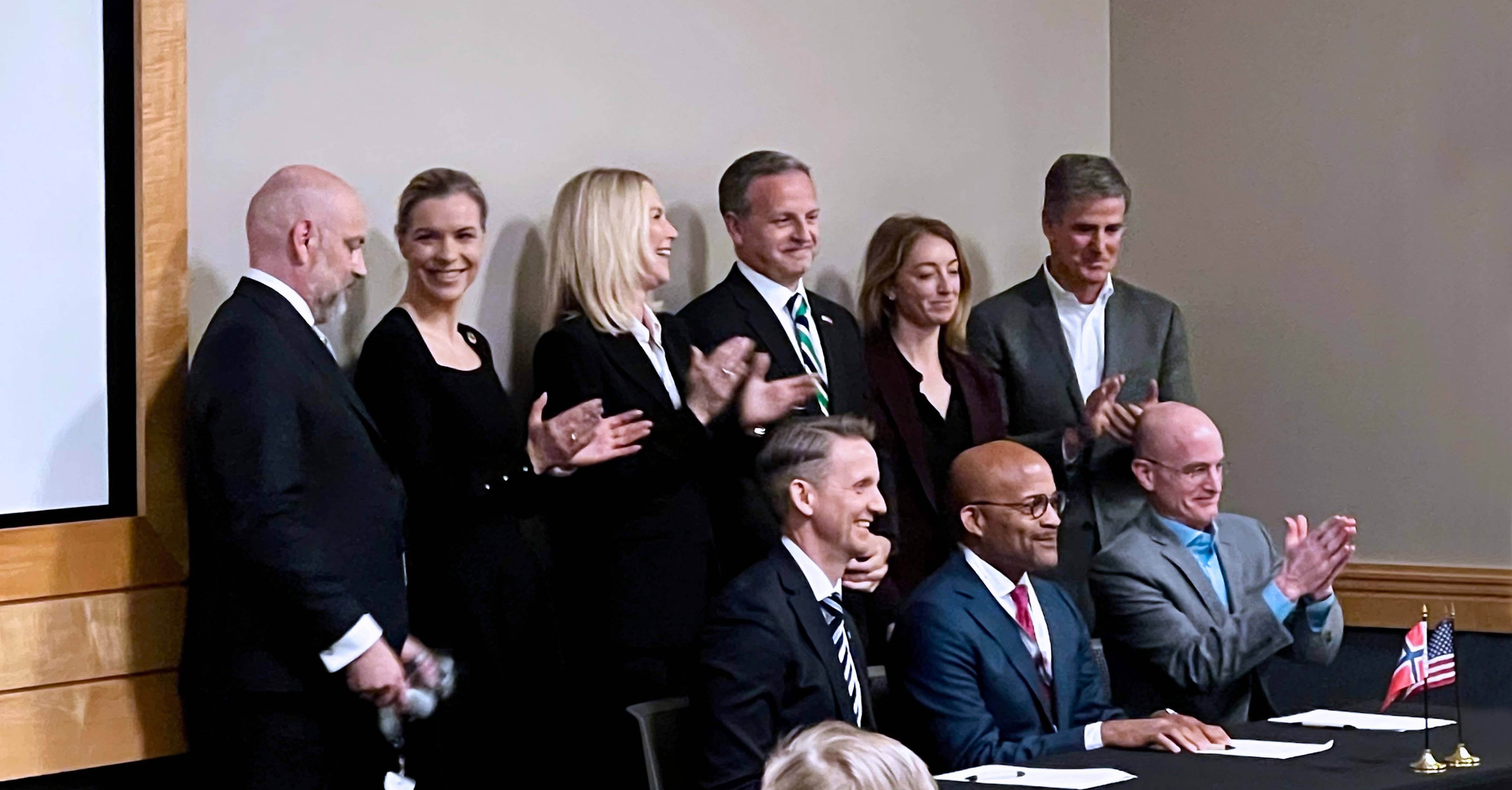
The battle against climate change requires both cutting down on carbon emissions and extracting existing carbon dioxide from the air. Lately, there's been more focus on efforts to remove carbon, also called Carbon Dioxide Removal (CDR) projects. These endeavors work to trap and store carbon dioxide, providing an essential method for addressing climate change and reaching net-zero emission goals.
)
Introduction to the Collaboration Between CO280, Aker Carbon Capture, and Microsoft
The collaboration between CO280, Aker Carbon Capture, and Microsoft signifies a significant step forward in scaling up carbon removal efforts in North America, particularly focusing on the pulp and paper industry.
CO280 leads in creating Carbon Dioxide Removal (CDR) initiatives tailored for the pulp and paper sector. They collaborate with industry partners to establish, fund, build, and manage extensive CDR endeavors. These initiatives fill an important need in the CDR industry by providing long-lasting, confirmable, cost-effective carbon elimination options for businesses looking to compensate for their carbon emissions through the voluntary carbon marketplace. At present, CO280 is working on developing over 10 million tons per year of enduring CDR capability.
"This commitment on the part of three best-in-class companies is exactly the kind of bold move the industry needs to unlock the enormous removal opportunity in the pulp and paper industry and scale up the CDR market. Together, we are developing the largest scale, lowest cost, permanent carbon removal projects in the world," said Jonathan Rhone, Chief Executive Officer of CO280.
Aker Carbon Capture offers its expertise in capturing carbon emissions. Their modular solutions, such as the Just Catch units, are designed for quick deployment across different industries on a large scale. Aker Carbon Capture has successfully deployed seven units so far, including five Just Catch 100 units and one Big Catch unit.
"It's time to move past the first-of-a-kind and the demonstration projects for carbon removal. The deployment rate needs to be accelerated by the hundreds to deliver the `net' in net zero. We have demonstrated the strength of working together in the past, and we are excited to expand our collaboration with Microsoft and CO280 to further deliver impact," says Egil Fagerland, CEO of Aker Carbon Capture.

>> In Other News: Cabot Corporation and Partners Selected for $5M in U.S. Department of Energy Grant to Support Continued Advancement of Global Hydrogen Economy
Meanwhile, Microsoft aims to achieve ambitious environmental targets by becoming carbon negative by 2030 and reaching net-zero emissions by 2050. They understand the importance of removing carbon from the environment to meet these objectives and are actively working on establishing a strong market for high-quality Carbon Removal Credits (CRCs). In this partnership, Microsoft focuses on using their digital knowledge to create an effective digital system for tracking and reporting carbon.
Focus on Scaling Up Carbon Removal Efforts in North America
The main objective of this partnership is to speed up the expansion of carbon removal initiatives in North America by capturing and securely storing biogenic CO2 emissions from pulp and paper mills. This effort focuses on North America, acknowledging its significant potential for reducing carbon within the pulp and paper sector. It's estimated that this industry could remove as much as 130 million tons of carbon annually due to the high biogenic content (80-90%) in its emissions. By permanently capturing these emissions, it leads to negative emissions, taking out more carbon dioxide from the air than what's being emitted.
The successful partnership has the potential to greatly decrease carbon emissions in North America by capturing and storing biogenic CO2 emissions from pulp and paper mills. This effort contributes to reaching net-zero emission goals. It's estimated that the pulp and paper industry in North America presents an opportunity for removing up to 130 million tons of carbon annually. Even achieving a portion of this capacity through the collaboration could make a significant difference in addressing climate change.
Potential for Transformative Change in Carbon Removal Efforts
The partnership among CO280 Solutions, Aker Carbon Capture, and Microsoft marks an important advancement in expanding initiatives to remove carbon from North America's environment. These top companies' combined knowledge provides an encouraging route toward reaching ambitious goals for achieving balance between emitted and removed carbon dioxide levels.
Subscribe to the newsletter
Daily decarbonization data and news delivered to your inbox
Follow the money flow of climate, technology, and energy investments to uncover new opportunities and jobs.
Latest issues
-
How 45Q Credits Revived This Troubled $9B Megaproject
Inside This Issue 💰 How 45Q Credits Revived This Troubled $9B Megaproject 🍁 Commencement of First Phase Operations for a Carbon Capture and Storage (CCS) Project in Canada 🤝 Haffner Energy Secures...
-
The Deal Structure Everyone's About to Copy
Inside This Issue 💼 The Deal Structure Everyone's About to Copy 📈 Exxonmobil Raises Its 2030 Plan – Transformation Delivering Higher Earnings, Stronger Cash Flow, and Greater Returns ⚡ Nextera Wor...
-
Inside XCF Global's $300M Bet to Double U.S. SAF Output
Inside This Issue ✈️ Inside XCF Global's $300M Bet to Double U.S. SAF Output ⚙️ Capsol Technologies Signs MoU with US Utility to Deploy CapsolGT® for Low-carbon Gas Power Generation 🏭 Babcock &...
Company Announcements
-
Clean Planet Technologies (CPTech), part of the Clean Planet Group, has announced that its core pyrolysis-oil upgrading process has now been formally patented in both the United States and Saudi Ar...
-
(December 12, 2025 - Oslo, Norway) Nel ASA (Nel, OSE: NEL) is pleased to announce that following a seven-year development program, and now a successful start-up and production of clean hydrogen on ...
-
Hydrogen Technology Venture Launches in Bowling Green
BOWLING GREEN, Ky. — A new tech company is coming to Bowling Green, bringing dozens of jobs to Warren County. What You Need To Know UFS ARK will be a joint venture of United Fiber Sensing and OgM...
-
HyOrc Positions Green Methanol as the Economic Solution to Shipping’s Decarbonization Challenge
HOUSTON, Dec. 12, 2025 (GLOBE NEWSWIRE) -- HyOrc Corporation (OTCID: HYOR), a fully SEC-reporting clean-energy company focused on decarbonizing heavy industry, today commented on the growing global...